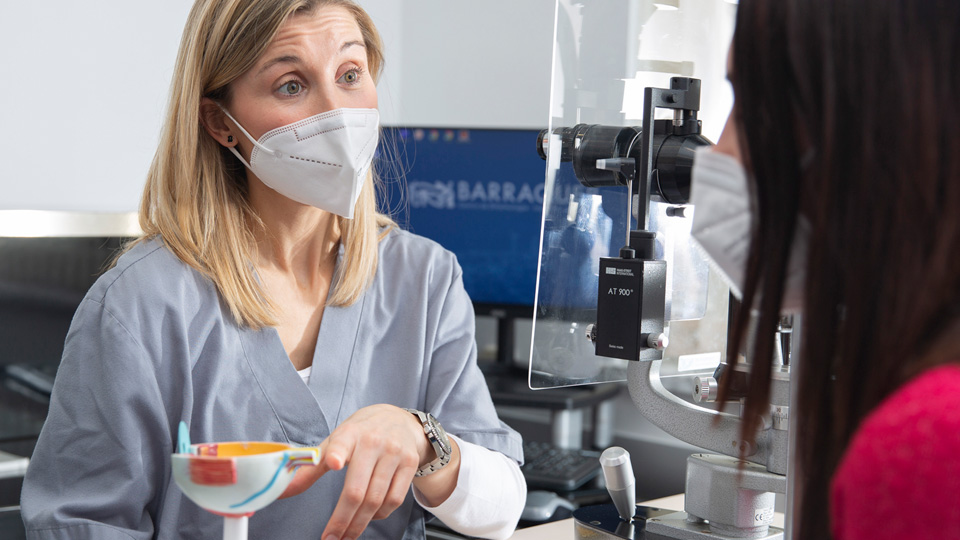Vitreoretinal complications in high myopia
09/01/2026

19/04/2021
Within the wide range of ocular conditions, there are some pathologies and disorders with a higher incidence in the population. The most common defects are those related to refractive errors (graduation), while the most common pathologies affect the retina, the macula and the lens.
Refractive errors affect a large number of people and, consequently, are the best known. The main ones are myopia, hyperopia, astigmatism and presbyopia or eyestrain. They are vision problems that occur due to alterations in the shape of the eye and its mechanics, which do not allow a good focus.
Most common refractive defects
In myopia, distant objects are focused in front of the retina and not on it, causing their vision to be blurred. On the other hand, in hyperopia, close objects are focused behind the retina, causing greater blurriness the closer the object in question is. On the other hand, an eye with astigmatism generally does not achieve an adequate focus neither far nor close. Finally, the last most common refractive error is presbyopia, also known as tired eyes, a defect produced by the loss of elasticity of the lens that generally manifests itself from the age of 40 and evolves over time.
Squint
Another ocular condition with a significant incidence is strabismus. It refers to the loss of parallelism of the eyes, a fact that prevents them from being aligned in the same direction. There are different genetic, environmental and optical factors that determine the development of this disorder.
Dry Eye
It is a disease involving a scarcity of tears or poor-quality tears and this produces an inflammation of the eye surface. Symptoms can be stinging, burning, a feeling of dryness and grit, and even blurred vision. A common cause is a hormonal alteration that results in the poor function of the lacrimal glands. It usually affects women to a greater extent than men.
Main retinal conditions
Retinal detachment and diabetic retinopathy are the main conditions that the retina can suffer from. Detachment occurs when the sensorineural retina separates from the pigment epithelium and fluid accumulates in the remaining space between the two. The lack of nutrition and blood supply suffered by the retina causes a loss, sometimes irreversible, of vision.
In the case of diabetic retinopathy, it appears when the blood vessels of the retina deteriorate. It is a common complication of diabetes mellitus and can cause progressive damage to the eyeball, leading to a severe decrease in vision and even blindness.
Age-related pathologies
There are pathologies associated to aging and the degeneration of the different structures of the eyeball. Age-related macular degeneration (AMD) affects more than 800,000 people in Spain. It is a degenerative disease of the macula that causes a progressive decrease in central vision.
Cataracts, although they can also be congenital, are one of the most common causes of vision loss among the elderly. They are caused by the loss of transparency of the lens, which translates into a decrease in visual acuity.
Glaucoma, which can also occur in children, is a chronic irreversible disease of the optic nerve that is the second leading cause of blindness in the Western world.
In all three pathologies, early diagnosis and treatment are vital to achieve a better visual prognosis. From the Barraquer Ophthalmology Center we recommend regular eye examinations from the age of 50, especially in people with a family history or risk factors.
Dr. Jose Lamarca, ophthalmologist of the Barraquer Ophthalmology Center
Almost all wearers of glasses and contact lenses consider reducing their prescription with refractive techniques at some point. In this chapter we explain all the options and help you know when it is worth having surgery, who is a good candidate and why it is so important to choose where to go.